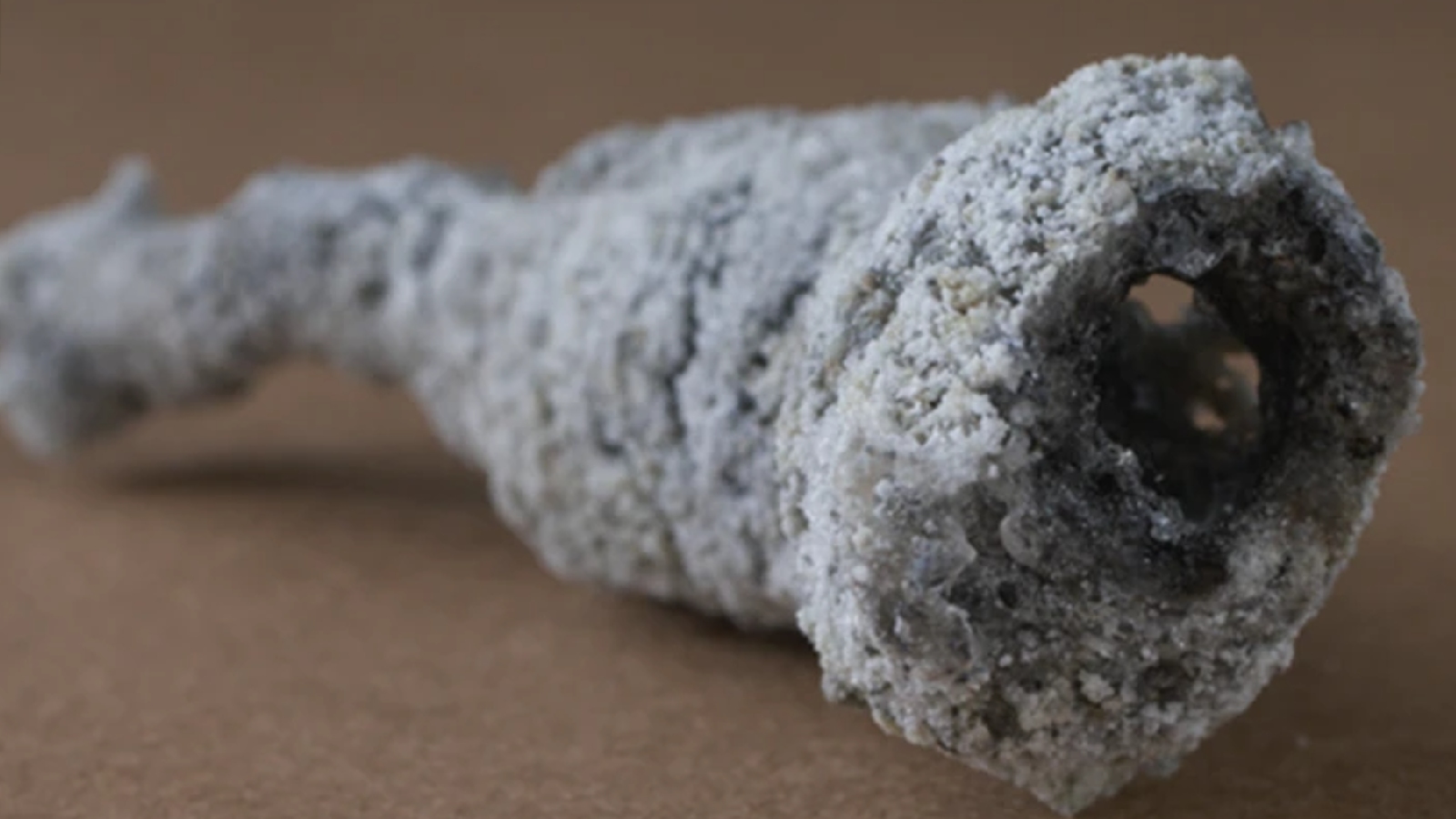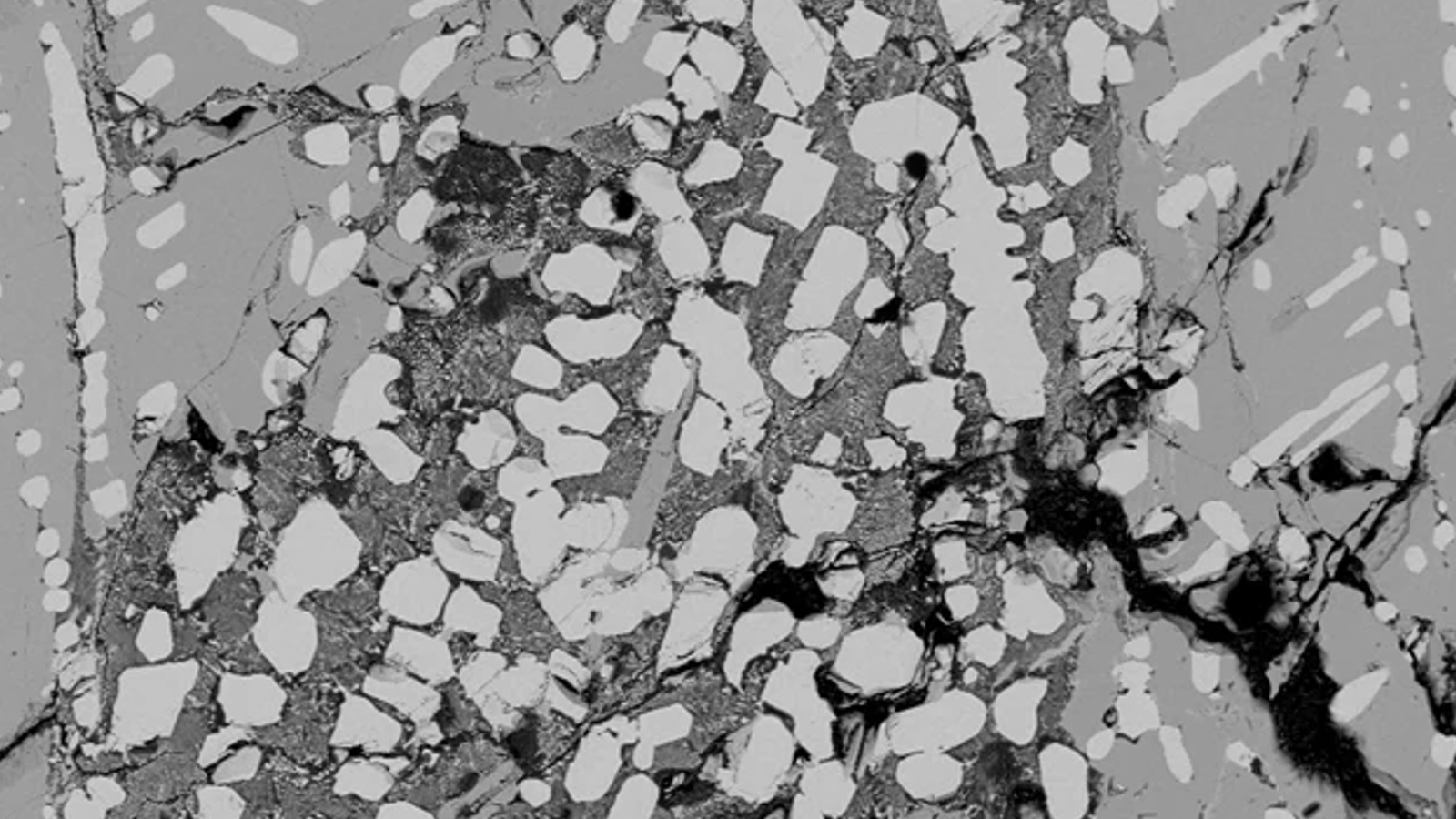Never-before-seen 'crystal-like matter' hidden in a chunk of fossilized lightning is probably a brand new mineral
The potential new mineral was discovered in a chunk of "fossilized lightning," or fulgurite, that was left behind when a tree in Florida was struck by lightning.

A potentially brand new mineral may have been hiding inside a chunk of "fossilized lightning" from Florida, scientists have revealed.
"We have never seen this material occur naturally on Earth," Mathew Pasek, a geoscientist at the University of South Florida, said in a statement. "Minerals similar to it can be found in meteorites and space, but we've never seen this exact material anywhere."
The fossilized lightning chunk, or fulgurite, was created when lightning struck a tree near New Port Richey. Fulgurites form when powerful lightning bolts discharge through the ground, which melts and fuses any nearby soil, sand, rock and organic debris into a singular metallic-looking lump.
The owner of the New Port Richey tree sold the fulgurite to Pasek, who studies high-energy chemical reactions like those triggered by lightning. After cracking open the rocky lump, which was around 2.8 inches (7 cenitmeters) long and 0.8 inches (2 cm) wide, Pasek and fellow researchers discovered a "colorful, crystal-like matter" within the fulgurite. Subsequent analysis revealed that the mysterious matter was a previously unknown material consisting mainly of calcium phosphate (CaHPO3). The team strongly suspects that the new material is a brand-new mineral type, but it will take time for this to be confirmed by other scientists.
The researchers published their findings March 14 in the journal Communications Earth & Environment.
Related: Powerful laser blast used to control lightning for the first time

During their analysis, the researchers also tried, and failed, to recreate the mineral in a lab. The scientists believe they failed to recreate the new material because it rapidly forms under precise conditions that are hard to predict and replicate: Every time they got close, the compound would start to break down into something else because it had been heated for too long.
Sign up for the Live Science daily newsletter now
Get the world’s most fascinating discoveries delivered straight to your inbox.
The researchers hope that this form of calcium phosphate can soon be confirmed as a new mineral, at which point it will be officially named. They also believe that other brand-new mineral types could be created through a similar pathway and want to examine more fulgurites to test this theory.
This is not the first time that an unexpected compound has been discovered in fossilized lightning. In December 2022, researchers found a rare type of quasicrystal in a fulgurite unearthed in Nebraska's Sandhills. (Quasicrystals are unusual, "rule-breaking" crystals with patterns that do not repeat.)

Harry is a U.K.-based senior staff writer at Live Science. He studied marine biology at the University of Exeter before training to become a journalist. He covers a wide range of topics including space exploration, planetary science, space weather, climate change, animal behavior and paleontology. His recent work on the solar maximum won "best space submission" at the 2024 Aerospace Media Awards and was shortlisted in the "top scoop" category at the NCTJ Awards for Excellence in 2023. He also writes Live Science's weekly Earth from space series.










